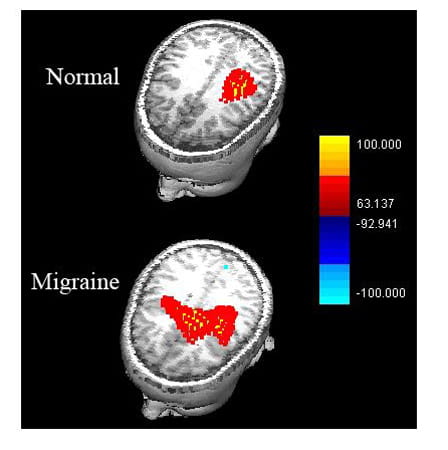Neuromagnetic Abnormalities in Childhood Migraine
The objective of this project is to address two specific aims:
- Quantify the spatial and spectral alteration of motor cortex excitability in pediatric migraine during migraine attacks with magnetoencephalography (MEG)
- Determine the spatial, spectral, frequency and temporal abnormalities of movement-evoked magnetic fields (MEFs) between migraine attacks
We will digitize MEG data at 6,000 Hz. We will determine abnormalities of cortical excitability in migraine by analyzing neuromagnetic spectral power in 0-3,000 Hz at source levels using a wavelet-based beamformer. Since MEG has mainly been used in the study of brain activities in low-frequency ranges (< 40 Hz) in adult migraines, the study of the motor cortex excitability in pediatric migraine with neuromagnetic signals in 0-3,000 Hz is novel. Likewise, our quantification of the cortical excitability with neuromagnetic spectral and frequency signatures is technically innovative.
Although this proposal focuses on the motor cortex, the same methodologies can be applied to evaluate other brain areas. If successful, it will provide a noninvasive assessment and localization option for abnormalities of cortical excitability. Effective methods for treating and preventing migraine attacks may be possible by normalizing cortical excitability with TMS, medication and other methods.
Given that HFBS are a new discovery and our MEG methodologies are novel, improved treatment and prevention solutions based on better understanding of the mechanisms of migraine may protect children with migraine from progressing into a chronic condition with significant disability.
Funded by a grant by NIH / NINDS R21-NS072817.




